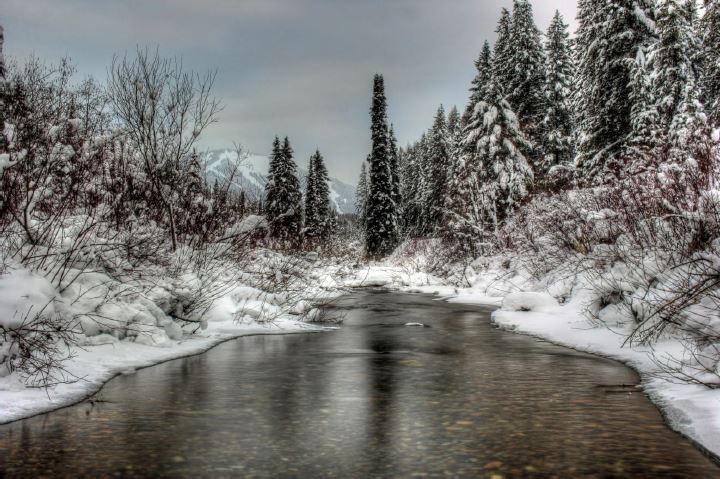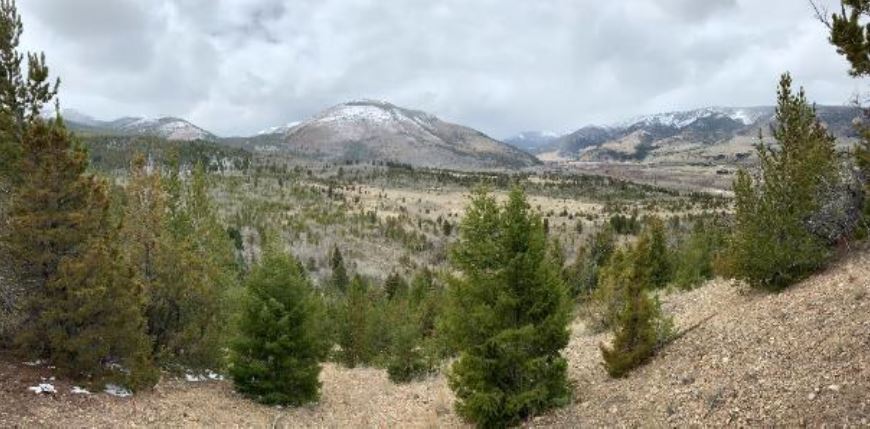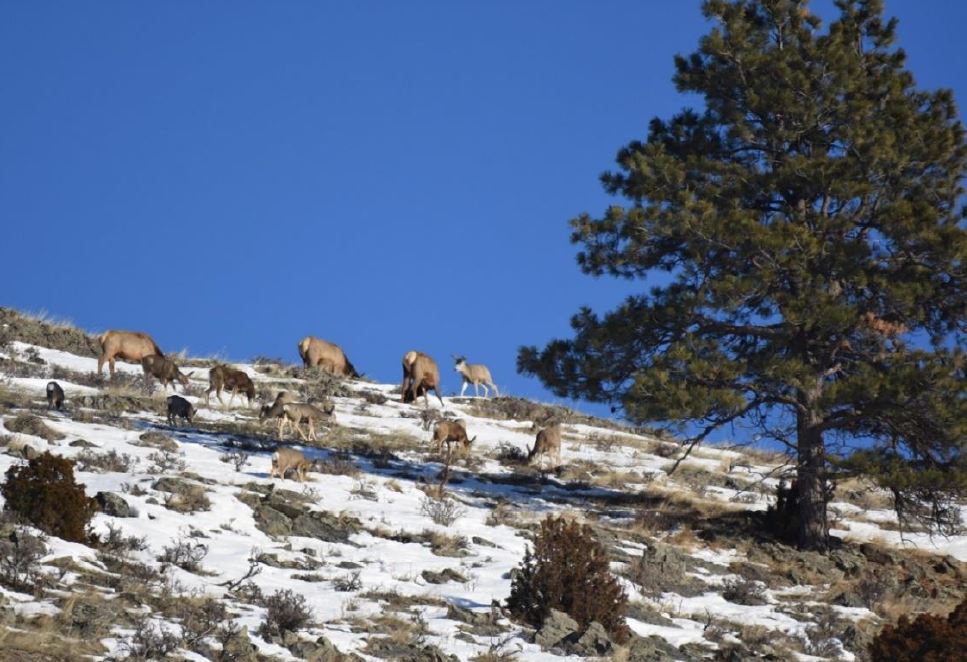
FWP has completed more than 563,000 acres of permanent conservation easements to retain functional wildlife habitats and open space in key areas; enrolled about 310,000 acres of private lands into 30-year conservation leases to retain their native habitat characteristics; and has approximately 320,000 acres of private lands enrolled in shorter term habitat enhancement and restoration contracts.
Between January 1, 2019, and December 31, 2020, alone, FWP invested in 69,957 acres of conservation through a combination of conservation easements and fee title acquisition. This includes nine new conservation easement properties totaling 68,411 acres and seven fee title projects totaling 1,546 acres. These are important acres for wildlife across the seasons and migration periods.

Pipe Creek | Photo courtesy of Bob Hosea
The 22,295-acre Kootenai Forestlands project involves timberlands owned by Stimson Lumber Company that are intermingled with Kootenai National Forest Lands near Libby. The project precludes development of these forests while allowing the landowner to continue sustainable forest management in a manner that supports fish and wildlife habitat, landscape connectivity, and public recreation access. Wildlife benefiting from this project include deer, elk, moose, bear, lion, wolf, forest grouse, and 43 species of concern. These include the federally listed species Canada lynx, grizzly bear, and bull trout. This area is part of an international network of critical lands providing genetic connectivity among five small populations of grizzly bears.

Dahl Lake with the project lands in the background | Photo courtesy of Chris Boyer
Forest lands immediately south of the Lost Trail National Wildlife Refuge are protected from subdivision and development as a result of the 7,256-acre Lost Trail Conservation Easement. These forests, intermingled with rough fescue meadows provide year-round habitat for elk, deer, moose, black bear, mountain lion, forest grouse, and wild turkey. The conservation lands support an estimated 38 species of concern, including the federally listed grizzly bear and Canada lynx. This area also serves as a key linkage for migratory elk that summer on the Flathead National Forest to the north and winter on Flathead Reservation to the south. The Lost Trail property serves a similar linkage for grizzly bears, wolves, and lynx that move between blocks of intact habitat in this part of the state.

This addition comprises a 154-acre parcel of important fish and wildlife habitat that connects the Garrity Mountain WMA to a public road, while also supporting a bighorn sheep migration corridor from the Flint Mountain Range to Garrity Mountain WMA. The parcel includes 0.7 miles of Warm Springs and Barker Creeks, supporting the federally listed bull trout as well as westslope cutthroat trout and a diversity of neotropical bird species associated with the riparian habitats. This addition provides hunting, fishing, and hiking opportunities while improving public accessibility to this part of the WMA.

Elk and mule deer sharing bitterbrush on deciduous shrubland habitat
The 160-acre Schmeller addition shares two sides with the WMA and contributes to the ecological function of the WMA and surrounding Beaverhead-Deerlodge National Forest. It is part of the migration pathway for mule deer and elk, connecting winter range on the west side of the Continental Divide to calving/fawning areas and summer range east of the divide. Wet meadows, aspen and willow stands provide year-round habitat for moose, beaver, black bear, ruffed grouse, and numerous other small mammals, neotropical birds, amphibian, and reptiles.

The Ash Coulee Conservation Easement encompasses 3,400 acres in Valley County, about 5 miles southeast of Hinsdale. The easement conserves a combination of prairie, shrub grassland, and breaks habitats associated with the Milk River. The property is critically important for wintering migratory pronghorn and serves as a key linkage between summer and winter ranges for migratory sage-grouse, while providing year-round habitat for white-tailed and mule deer, sharp-tailed grouse, and gray partridge. Grazing management assures available forage and cover on seasonal and migration ranges.
The Montana Wildlife Habitat Improvement Act helps to restore wildlife habitats by managing noxious weeds.
Learn more >By tailoring fence design and placement, you can reduce wildlife injuries and decrease damage to your fence.
Learn more >Roads can directly impact wildlife through injury or mortality resulting from wildlife vehicle collisions.
Learn more >Helping landowners conserve key habitat, including wildlife movement corridors.
Learn more >The Montana Wildlife Habitat Improvement Act provides federal funding to restore priority wildlife habitats by managing noxious weeds.
Learn more >Not all fences create problems for wild animals. By tailoring fence design and placement, landowners can reduce wildlife injuries and decrease damage to the fence.
Learn more >FWP is committed to reducing agricultural conflicts caused by migrating wildlife
Learn more >Commingling of elk and livestock and the associated risk of brucellosis transmission while maintaining elk on the landscape.
Learn more >